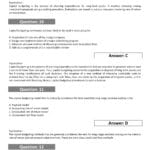Imagine a sudden, jarring siren erupting from your phone, accompanied by an urgent message. That’s likely a CMAS/WEA alert, your phone’s built-in emergency notification system. This guide provides a comprehensive overview of CMAS/WEA, including CMASALL, to help you manage these vital alerts effectively. By the end, you’ll be well-equipped to navigate emergency notifications with confidence.
CMAS/CMASALL: Essential Emergency Alerts
That distinctive buzz and alert tone from your phone? It’s likely a CMAS/WEA alert, signaling an emergency. CMAS (Commercial Mobile Alert System) and WEA (Wireless Emergency Alerts) are essentially the same system, designed to deliver crucial information directly to your mobile device. These alerts cover a range of emergencies, from severe weather like tornadoes and flash floods to AMBER Alerts and even Presidential Alerts during national emergencies.
This system leverages cell broadcast technology, similar to a radio station for your phone, sending alerts to all compatible devices in a specific geographic area. It’s a significant advancement from its predecessor, the PLAN (Personal Localized Alerting Network), ensuring everyone in a designated zone receives critical information, irrespective of their carrier or app downloads. The distinctive sound and vibration are designed to grab your attention, even if your phone is silenced.
Why CMAS/WEA Matters
Several key features make CMAS/WEA invaluable for public safety:
- Personalized Alerts: You can customize your settings to choose the types of alerts you receive, ensuring you get the most relevant information.
- Accessibility: The unique sounds and vibrations make alerts accessible to those with hearing or visual impairments.
- Free and Universal: Receiving CMAS/WEA alerts is free and available to anyone with a WEA-enabled device, regardless of carrier.
Managing Your Alerts
Managing your CMAS/WEA alerts is straightforward. Navigate to your phone’s settings, locate the “Alerts” or “Notifications” section, and look for “Wireless Emergency Alerts” or “Government Alerts.” Here, you can typically toggle on or off various alert types. Note that Presidential Alerts are mandatory and cannot be disabled.
The Future of CMAS/WEA
CMAS/WEA is constantly evolving. Ongoing research focuses on enhancements such as multilingual alerts, more precise location targeting, and even smart home device integration. These advancements may transform CMAS/WEA into an even more personalized and comprehensive public safety tool.
Addressing Public Concerns
CMAS/WEA, particularly Presidential Alerts, have sparked some controversy. Concerns about potential misuse, intrusiveness, accuracy, and false alarms are valid. Open communication and factual information about the system’s purpose and limitations are crucial to alleviate these concerns. Ultimately, CMAS/WEA is a powerful tool for public safety when used responsibly.
CMAS on Consumer Cellular: Staying Informed
Seeing “CMAS” on your Consumer Cellular phone? It’s the Commercial Mobile Alert System (CMAS), a nationwide system keeping you informed about emergencies. Also known as Wireless Emergency Alerts (WEA), it’s a direct line from officials to your phone with crucial updates. CMAS provides potentially life-saving information in various situations, from extreme weather to AMBER Alerts, delivered specifically to your location.
This free service works across various cell phones and carriers, accessible regardless of your plan or data usage. The distinct sound and vibration pattern ensures you recognize CMAS messages immediately. While Presidential and imminent threat alerts are mandatory, you likely have some control over other alert categories, like severe weather warnings or AMBER Alerts, which you can customize in your phone’s settings.
CMAS provides an extra layer of security during emergencies, though some find the alerts disruptive. Experts generally agree that the benefits of timely warnings outweigh the potential inconvenience. Research continues to optimize alert delivery, minimizing disruptions while maintaining effectiveness.
Here’s a summary:
| Feature | Description |
|---|---|
| Name | Commercial Mobile Alert System (CMAS) / Wireless Emergency Alerts (WEA) |
| Purpose | To deliver critical emergency alerts directly to mobile devices. |
| Cost | Free |
| Targeting | Location-based, delivering relevant alerts. |
| Alert Types | Severe weather, AMBER alerts, Presidential alerts, and other imminent threats. |
| Customization | While Presidential and Imminent Threat Alerts are mandatory, some alert types may offer customization options. |
CMAS is continually evolving. Research explores improving location accuracy, developing more sophisticated alert categories, and expanding supported emergency types. This vital safety net probably will become even more comprehensive and helpful in the future.
Enhance your professional credibility by obtaining the CDIP certification, the industry-standard credential for data privacy professionals.
Managing CMAS Alerts on Consumer Cellular Flip Phones
Dealing with CMAS alerts on your Consumer Cellular flip phone? These alerts, part of the Commercial Mobile Alert System, are designed for your safety, providing information about emergencies. While crucial, they can be disruptive. Managing these alerts can vary slightly depending on your specific flip phone model.
General Approach (May Not Work)
This method may not be effective on all phones:
- Go to Messages.
- Find Options.
- Locate Emergency Alerts.
- Select Wireless Emergency Alerts.
- Explore Options and Settings for customization or disabling features.
User-Reported Method for Consumer Cellular Link II
A user reported this method for the Link II:
- Open Messages.
- Locate Options (usually in the upper right-hand corner).
- Select “7 (Emergency Alerts)”.
- Choose Options, then Delete Broadcast (individual alerts).
- Confirm with OK.
Alternative Solutions
If these methods fail:
- Contact Consumer Cellular: Their support team can provide specific instructions for your model.
- Disable All Notifications: This extreme measure silences CMAS alerts but also other important notifications.
Pros and Cons of CMAS Alerts
| Pros | Cons |
|---|---|
| Crucial information during emergencies | Can be disruptive |
| Helps you take appropriate action | May cause unnecessary anxiety |
| Informs you even without other news sources | Can be difficult to customize on some phones |
Consider the trade-offs before silencing these alerts. While annoying at times, they are designed for your safety. Experts suggest customizing alerts to receive only the most critical ones. Our understanding of managing these alerts is always evolving. Stay updated on potential new settings from your carrier and phone manufacturer. Prepare for the challenging CMAS practice test and master the skills required for success in accounting and financial management.
- Unlock 6000+ words beginning with he: A comprehensive analysis - April 20, 2025
- Mastering -al Words: A Complete Guide - April 20, 2025
- Master Scrabble: High-Scoring BAR Words Now - April 20, 2025
















